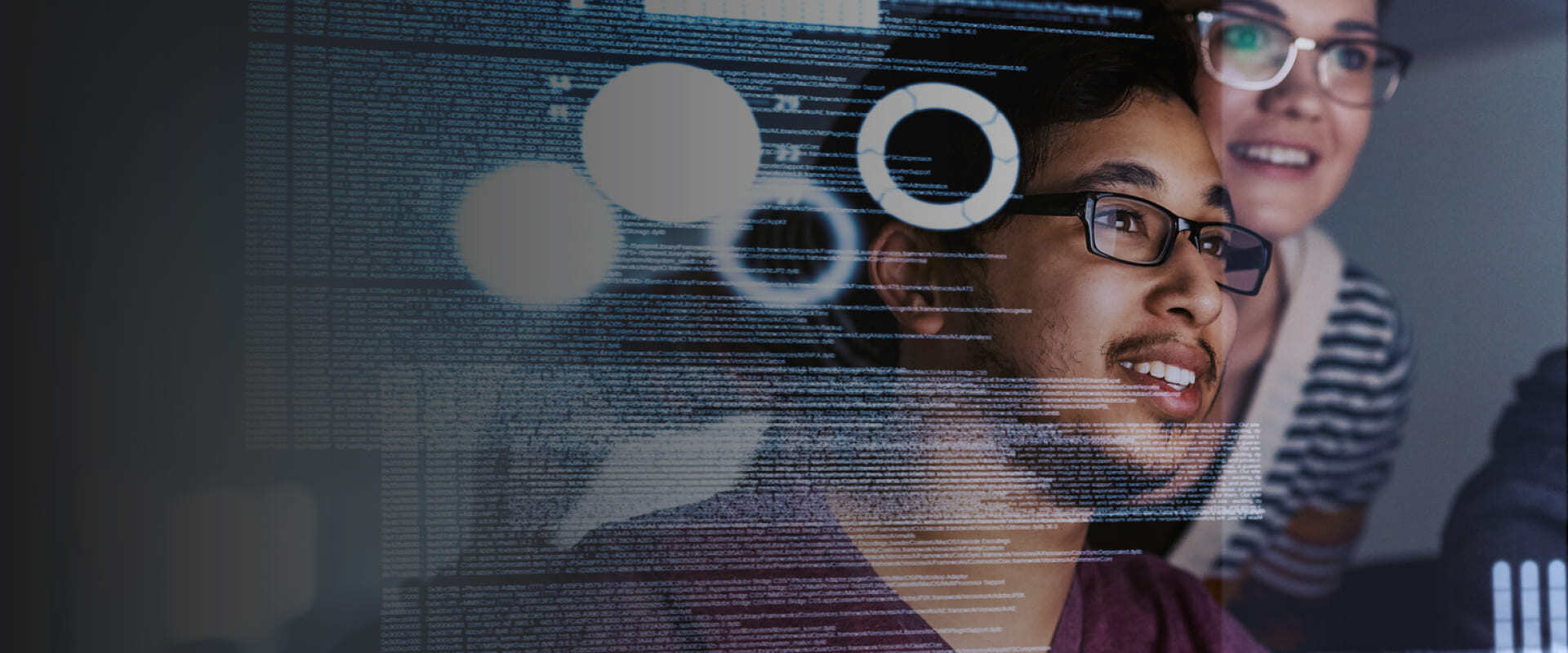Atlas Systems Named a Representative Vendor in 2025 Gartner® Market Guide for TPRM Technology Solutions → Read More

Cybersecurity Landscape: Navigating the Threat Landscape in 2025


10 min read | Last Updated: 03 Dec, 2025
TL;DR
- AI enhances detection analyzing massive data identifying anomalies, phishing patterns, vulnerabilities enabling proactive assessment, adaptive defenses, malware analysis, behavioral tracking preventing breaches before escalation
- Threat landscape encompasses malware, social engineering, DDoS, zero-day exploits, AI-powered attacks, supply chain vulnerabilities, IoT exploits, data breaches, APTs, state-sponsored increasingly sophisticated cyberattacks
- Multi-layered defense requires zero-trust architecture, strong authentication, regular updates, AI tools, backup systems, secure remote access, cloud security, employee training, incident response planning
- Emerging technologies like cloud, IoT, and 5G expand attack surfaces while blockchain, quantum computing introduce new challenges requiring continuous defense adaptation matching evolving hacker tactics
Back in 2021, the DarkSide ransomware group used AI and traditional hacking tools to launch a cyberattack on the Colonial Pipeline company. They infiltrated the company's computer system and encrypted its data. The hackers demanded payment in Bitcoin in exchange for the decryption key. This AI-powered cyberattack highly disrupted fuel supply across the East Coast.
The cybersecurity landscape has greatly evolved in recent years because of new threats and an increased demand for top-notch security solutions. Economic and geopolitical factors have also created a complex and unpredictable environment for businesses and consumers.
We have entered a new era of cybersecurity threats, and hackers now use advanced techniques to exploit vulnerabilities and gain unauthorized access to sensitive data. Phishing scams, AI-powered malware, and social engineering attacks have increased, affecting organizations and individuals alike.
Organizations must gear up to deal with unprecedented technological advancements and escalating cybersecurity challenges, or cyberattacks will become the order of the day. This blog post looks at the overarching cybersecurity landscape to help you navigate it well.
Definition of cybersecurity
Cybersecurity means protecting computer systems, networks, and data from unauthorized access, digital attacks, disruption, or damage. This is done by implementing security measures, such as preventative technologies, processes, and user education, to ensure the confidentiality, integrity, and availability of information.
Why is it important for individuals and organizations to understand the current cybersecurity landscape?
In January 2024, a ransomware attack on LoanDepot impacted 16.9M customers, and the company had to pay $27M in response and recovery costs. The incident highlighted the importance of having comprehensive security measures to protect sensitive customer information and mitigate financial losses.
As technology advances, the cybersecurity landscape evolves, and new threats, vulnerabilities, and attack methods emerge daily. Individuals and organizations must understand this landscape to protect their data, finances, and reputation. Here’s why cybersecurity awareness is critical:
Cybersecurity awareness helps individuals protect their personal information (by avoiding phishing scams and malware), stay safe online (by using strong passwords and avoiding suspicious websites), avoid financial loss (by protecting their financial assets), and protect their online reputation.
Organizations that understand the cyber threat landscape protect sensitive data, comply with regulations, maintain business continuity, protect their reputation and customer trust, and remain financially stable.
What Cyber Threats Does The Threat Landscape Cover?
The threat landscape is made up of different attacks; these are the main ones:

- Malware attacks: These are designed to gain unauthorized access to systems, steal sensitive information, or disrupt operations. Cybercriminals generate monetary profit by exploiting the stolen information. Examples of malware include ransomware, trojans, viruses, spyware, and adware.
- Social engineering attacks: These cyberattacks manipulate people into giving away sensitive information or compromising security. Malicious actors often use psychological manipulation to trick users into making security mistakes. Examples of social engineering attacks include email phishing, business email compromise, spear phishing, vishing, smishing, pretexting, and baiting.
- Denial-of-Service (DoS) and Distributed Denial-of-Service (DDoS) attacks: In a DoS attack, a hacker makes a computer or network resource unavailable to users by flooding it with excessive traffic. A DDoS attack is a more powerful DoS attack that uses multiple compromised devices to send excessive traffic from various sources, shutting down a service or website.
- Zero-day exploits: these attacks leverage unknown vulnerabilities in software or hardware that are exploited before patches are available. They are highly dangerous because there are no known defenses.
- AI-powered cyber attacks: These use AI to automate and enhance cyberattacks. They are more sophisticated, highly targeted, and difficult to detect than traditional cyberattacks.
- Supply chain attacks: These target third-party vendors or software providers to compromise an organization's supply chain. A good example is the SolarWinds attack in 2020.
- IoT and smart device exploits: Attackers leverage security vulnerabilities in IoT devices to gain unauthorized access or use the devices as part of a larger attack.
- Data breaches and data leaks: In a data breach, sensitive information is accessed or stolen by unauthorized individuals; in a data leak, confidential data is unintentionally exposed to unauthorized parties, often due to human error or system misconfigurations.
- Advanced Persistent Threats (APTs): These are long-running cyberattacks that steal data, sabotage systems, or conduct espionage. They may be orchestrated by nation-states or well-funded groups.
- State-sponsored attacks: These cyberattacks are supported by a government and target other countries' critical infrastructure, government agencies, or public sector entities.
- Information manipulation: These cybersecurity attacks deliberately distort information to deceive or influence public perception, undermine trust in legitimate sources, or cause social disruption.
Emerging Technologies and Their Impact on Cybersecurity
Emerging technologies like Artificial Intelligence (AI), Machine Learning (ML) Internet of Things (IoT), blockchain, 5G Networks, and Quantum Computing offer advanced tools for threat detection and response, but they also create new vulnerabilities, making the cybersecurity landscape more complex.
Technologies like AI and Machine Learning (ML) have many positive impacts. They enhance threat detection and response by analyzing data and identifying common patterns in security breaches. AI can automate security tasks such as vulnerability scanning and compliance checks, reducing human error and allowing workers to focus on more complex issues. Blockchain decentralizes databases for secure data storage.
But these technologies also have some negative impacts. Vulnerabilities in Cloud services, IoT devices, and 5G networks expand the attack surface for cybercriminals, empowering them to develop more sophisticated attacks. For example, some malicious actors use AI to launch attacks on a larger scale. Our reliance on emerging technologies increases the risk of security breaches.
How AI is Changing the Cybersecurity Landscape
AI is transforming the cybersecurity landscape in both positive and negative ways. Here's a detailed overview of the changes:
Positive ways AI is changing the cybersecurity landscape
- Enhanced threat detection: AI models analyze massive data in real time to identify anomalies and suspicious activity like unusual network traffic patterns and incorrect login attempts (which might indicate a cyber attack).
- Real-time response: AI algorithms can analyze incoming data as it arrives and generate relevant actions immediately. Alerts are prioritized based on risk, so the most significant threats are addressed first.
- Vulnerability assessment: AI utilizes machine learning algorithms to analyze data across systems and identify anomalies that might indicate potential vulnerabilities, supporting proactive threat detection and prioritization. The technology continuously monitors and adapts to emerging threats.
- Phishing detection: AI leverages machine learning algorithms to analyze website URLs, email content, and user behavior to identify patterns typically associated with phishing attacks, like unusual link structures, suspicious language, and unusual sender behavior. It can accurately flag potential threats and adapt to phishing tactics over time.
- Adaptive defense strategies: AI tools continuously learn from new data and automatically adjust security features in real-time to proactively counter emerging threats. The technology offers a more dynamic and responsive defense posture
- Advanced malware analysis: AI systems use machine learning and data analytics to identify indicators of hacking, data breaches, and malware infections. Most systems send real-time alerts, enabling security teams to launch incident response tactics quickly.
- User Behavior Analytics (UBA): By utilizing machine learning algorithms, AI can analyze user activity to identify patterns and anomalies in behavior. It establishes "normal" behavior patterns for each individual user for proactive detection and response.
AI challenges and risks
- Data quality: AI models need high-quality data for accurate analysis, and low-quality data (inaccurate data, inconsistent data, or data with missing values) can result in unreliable predictions, biased results, and, ultimately, ineffective applications.
- Sophisticated attacks: Hackers can use AI technology for malicious purposes, such as AI-enhanced social engineering, data poisoning, and deepfakes. AI-powered attacks are difficult to detect and can bypass traditional security tools.
- False positives: Inaccurate or biased training data can lead to incorrect AI classifications. Insufficient contextual understanding can also cause AI to categorize normal activities as threats. Some AI models can’t capture complex threats and fail to adapt well to new situations.
- Skills gap: AI systems require specialized knowledge and expertise to implement and manage. There’s a big gap between the skills needed to effectively implement and utilize AI and the skills currently possessed by the workforce.
How to Protect Against the Threat Landscape
Companies must adopt a multi-faceted approach that addresses various threats and leverages the latest technologies. Here’s how to go about it:

Prepare for sophisticated attacks
Organizations must implement a multi-layered security approach that includes regular software updates, strong password policies, strong firewalls, data encryption, vendor vetting, and employee cybersecurity training. An AI-powered cybersecurity solution can help companies detect and respond to threats more effectively.
Protect yourself against emerging threats
Implement machine learning models to detect and prevent AI-powered attacks. Additionally, use endpoint security tools with anti-ransomware features and maintain offline backups. And to prevent deepfake attacks (manipulated images, videos, or audio recordings that use AI to appear real), educate employees and implement verification protocols.
Address supply chain vulnerabilities
Mitigating supply chain vulnerabilities by conducting thorough risk assessments of suppliers and partners is essential. Evaluate them to ensure they adhere to robust cybersecurity standards. Also, implement secure communication channels to protect data shared across the supply chain. Regular compliance checks and audits will ensure vendors stick to high security standards.
Keep up with regulatory changes
Stay informed about industry laws and regulations to ensure compliance across all relevant jurisdictions. Monitor changes in cybersecurity laws and adapt policies accordingly. Also, collaborate with industry peers to advocate for unified standards that simplify compliance efforts.
Mitigate insider threats
To address intentional or unintentional insider threats, implement a zero-trust architecture and limit access based on user roles. Additionally, use a cybersecurity tool to monitor internal activities for suspicious behavior. These tools can flag potential insider threats early, ensuring cybersecurity teams act fast to prevent breaches.
Best Practices for Cybersecurity Landscape
Implementing cybersecurity best practices protects sensitive data, significantly reduces the risk of cyberattacks, and maintains operational continuity. Here are some best practices you can implement:

- Regular software updates: Software updates often include security patches that fix vulnerabilities, preventing cybercriminals from exploiting these weaknesses to launch cyberattacks. Updating software is a proactive measure to close security gaps and protect data.
- Implement Zero-Trust Architecture: The "never trust, always verify" approach ensures every user, device, and application is continuously authenticated and authorized. It significantly reduces the attack surface and mitigates the risk of data breaches.
- Strengthen authentication: Multi-factor authentication, strong passwords, and FIDO2-compliant methods can significantly reduce cyberattacks. They protect individuals and organizations against cyber threats like phishing attacks and credential theft.
- Use antivirus, anti-malware, and anti-spyware: These software scan and remove malicious software and other harmful programs from your computer and systems, protecting sensitive data.
- Use AI cybersecurity software: AI-powered software like Atlas Systems enhances threat detection by rapidly analyzing massive data to identify anomalies and potential vulnerabilities. It provides proactive defense against evolving cyber threats, ensuring faster incident response compared to manual methods.
- Data backup and recovery: This creates a safety net against data loss caused by cyberattacks, human error, hardware failures, or other threats. Organizations can restore critical information and maintain operations even during a security breach.
- Secure remote access: Create a security barrier between external networks and your organization's internal systems with features like end-to-end encryption and device verification. Ensure only authorized users access your network from remote locations.
- Prioritize cloud security: This protects sensitive data from cyberattacks, ensures compliance with regulations, and helps organizations maintain trust with customers.
- Incident response planning: Adopt a structured approach to quickly detect, contain, and recover from cyberattacks to reduce damage to systems, data, and your reputation.
- Employee training: Educating employees on how to identify and avoid cyber threats will minimize human error, which is often the primary cause of security breaches.
Use Atlas Systems to Evolve with the Cybersecurity Landscape
Cyber threats are constantly evolving and becoming more sophisticated, and static security measures will be ineffective in protecting your organization against emerging attacks. To be safe, you must continuously update your defenses to match hackers’ changing tactics and stay informed about new vulnerabilities and technologies.
Atlas Systems provides a holistic approach to cybersecurity through a structured Assess, Enable, and Manage methodology. Organizations can thoroughly evaluate their threat landscape, deploy responses, and maintain robust security. Our cybersecurity compliance solution helps organizations stay committed to security best practices. They protect sensitive data, avoid legal consequences, minimize financial losses, and maintain customer trust. Contact us today to start enhancing your cybersecurity posture.
FAQs on the Cybersecurity Landscape in 2025
How can small businesses protect themselves from cyberattacks?
They should implement strong password policies, encrypt sensitive data, use firewalls, utilize multi-factor authentication, regularly back up data, keep software updated, and educate employees about cyber threats. Running regular security assessments will also help them to identify vulnerabilities.
What is the importance of cybersecurity in compliance with regulations?
Cybersecurity ensures enterprises protect sensitive data by adhering to industry standards and legal requirements. This prevents data breaches, mitigates legal and financial repercussions related to non-compliance, and maintains customer trust.
How do cyber threats affect individual privacy?
Malicious actors can exploit vulnerabilities to access and steal sensitive personal information like medical records, financial data, contact information, and passwords. They can use this data for financial fraud, identity theft, reputation damage, and even harassment, compromising your right to control personal data online.
How can individuals enhance their personal cybersecurity?
To enhance their cybersecurity, individuals can use strong passwords, enable multi-factor authentication, regularly update software, and be wary of phishing emails. They can also back up important information, use good antivirus software, secure their Wi-Fi network, and practice safe browsing habits.
Related Reading
Blogs
.png?width=869&height=597&name=image%20(5).png)

.png?width=300&height=175&name=Rectangle%2034624433%20(2).png)







.png?width=645&height=667&name=Widgets%20(2).png)







.png)

